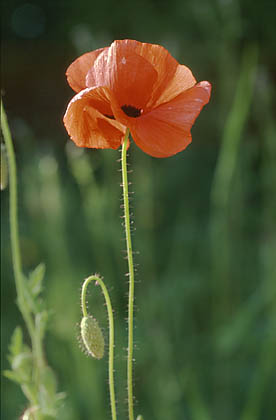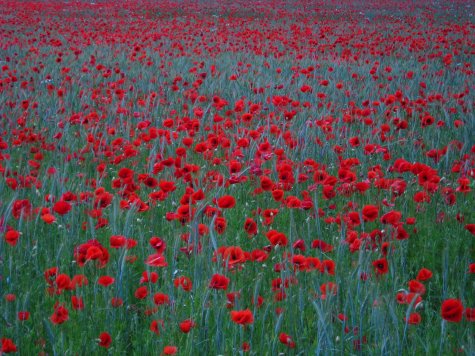Poppy fields
Photos: Arne Ader and Toivo Tuberik
Translation: Liis
Poppy.
Field poppy
Papaver dubium; field poppy or long-headed poppy; põldmagun
The field poppy grows in the whole of Estonia, mostly occurring as single plants. But in western Estonia and on the islands you can find fields of poppies.
The field poppy is a weed with a poorly developed root system (easy to remove when weeding) and it has arrived here with humans. Actually it is an introduced species in almost all of Europe.
The missions of an ephemeral plant are: to germinate quickly from seed, to grow fast, to spread seeds to ensure the continuation of the species – they are short-lived plants, adapted to seed production.
This shows in each part of the plant: little energy is used on the poorly developed root system, the branching stem allows more seeds to be produced, there are few leaves, or just enough to provide the amount of solar energy that is needed for seed production. The flowers are large and brightly coloured, sometimes pink or white. This attracts insects and so ensures pollination of the plants. That is also favoured by the structure of the flower.
White sap is characteristic of poppies, and it is poisonous. Care should especially be taken that it doesn’t come in the eyes or mouth of tiny flower pickers. In a vase picked flowers only provide joy for a short time and soon droop.
Opium poppy (unimagun, aedmagun; Papaver somniferum) - a garden plant, easily naturalised.
Prickly poppy (liivmagun ; Papaver argemone) - found locally, mostly in western Estonia
Common poppy (kukemagun; Papaver rhoeas) - garden plant but also a weed in western and northern Estonia.
A wondrous field in Saaremaa, near Lamjala. A place of pilgrimage for romantics: to be visited every year, to see the wonder that brings up the words of Andres Valkonen’s evergreen ”Moonika … mooniga” ...










